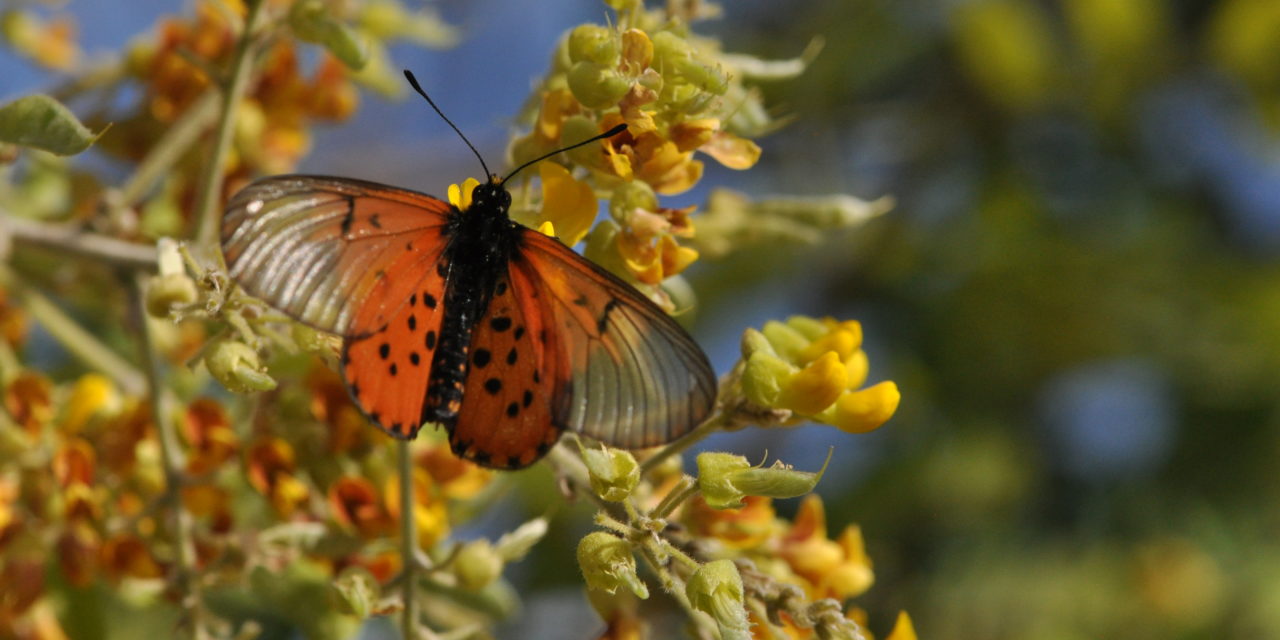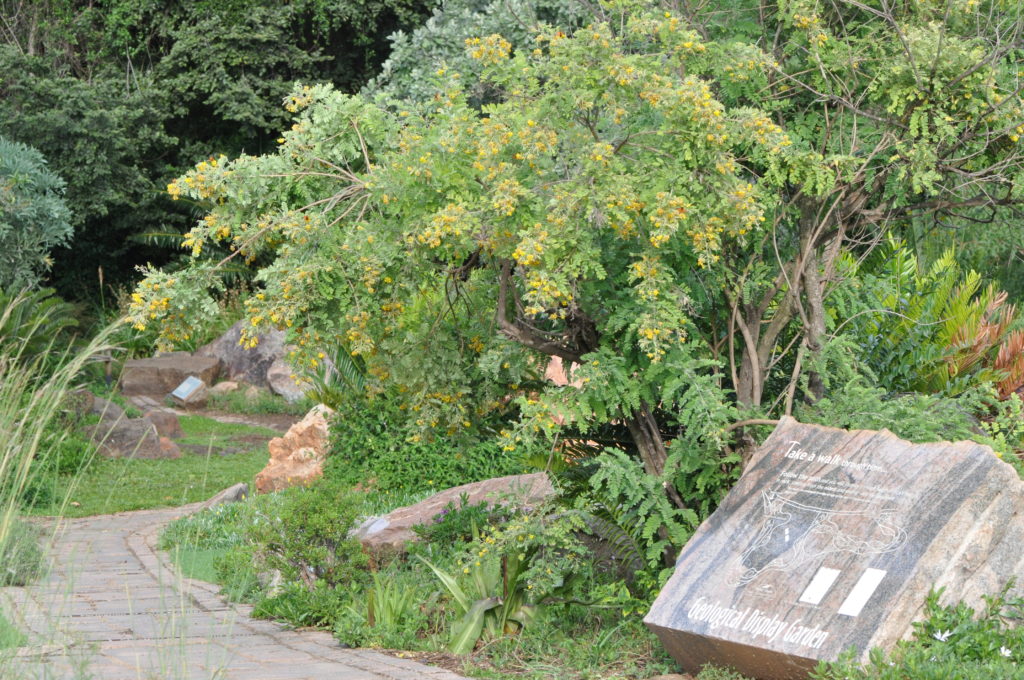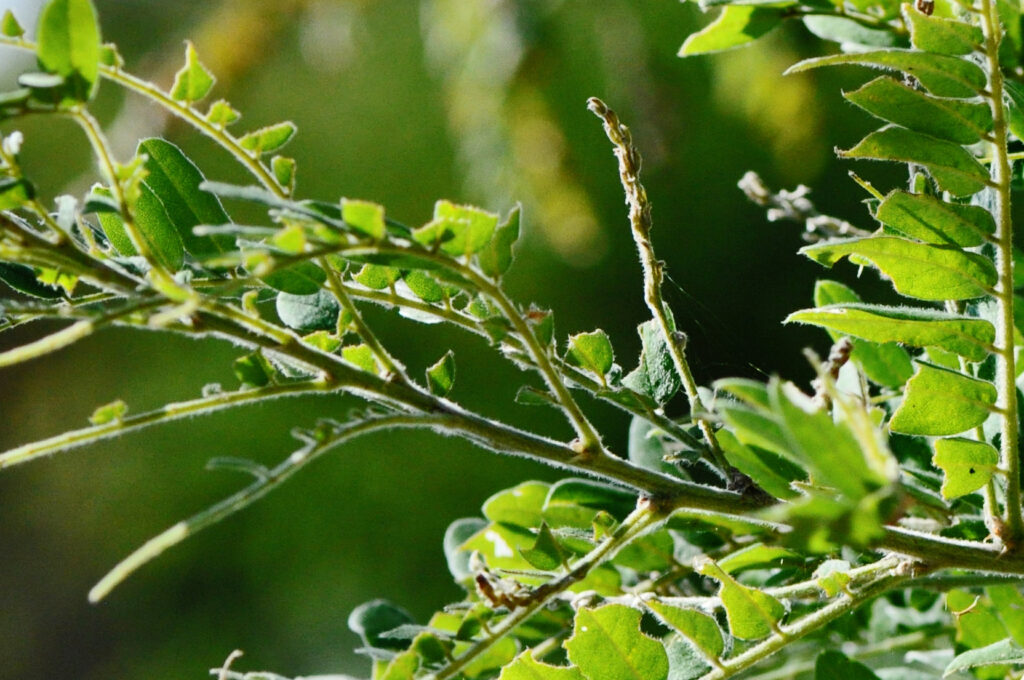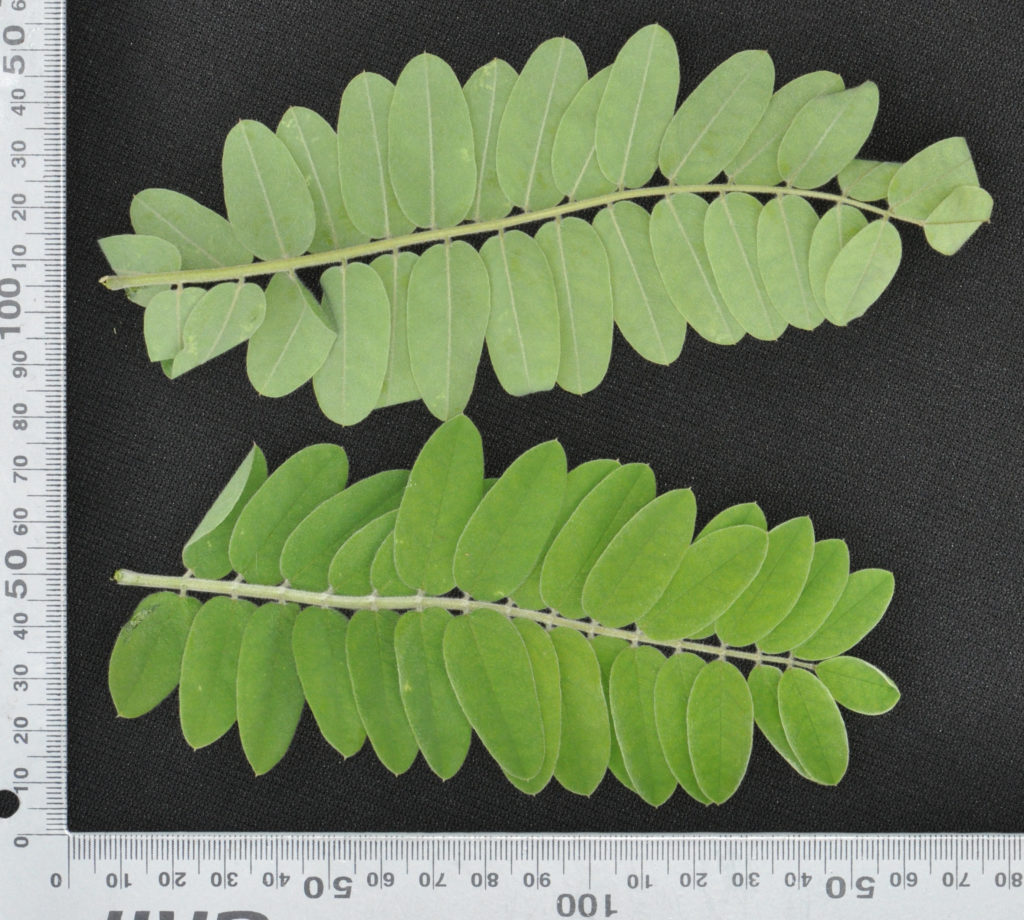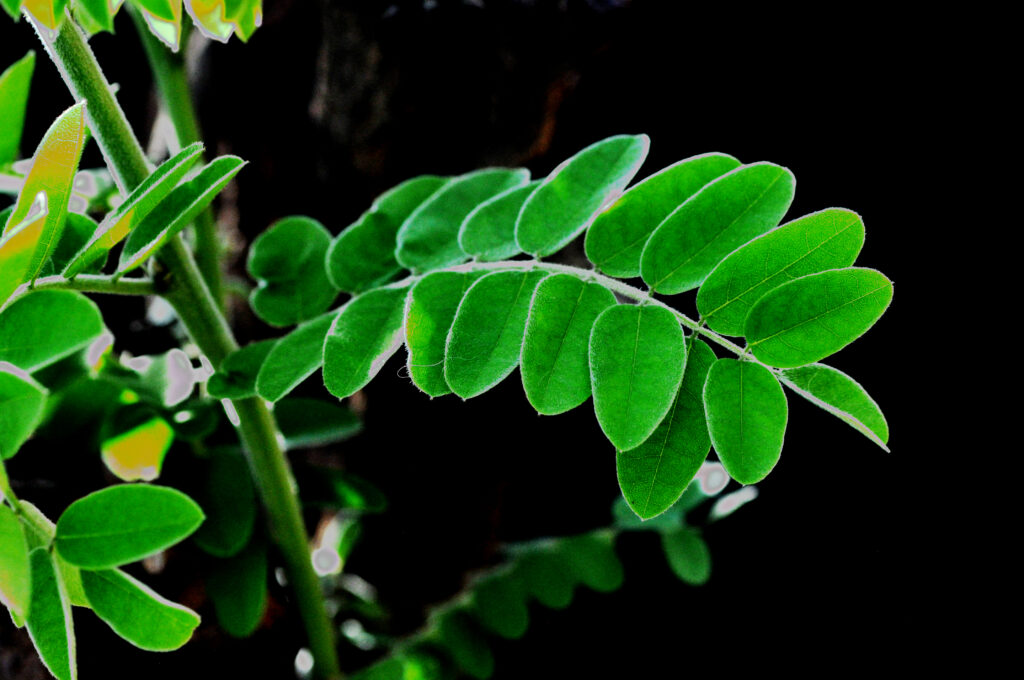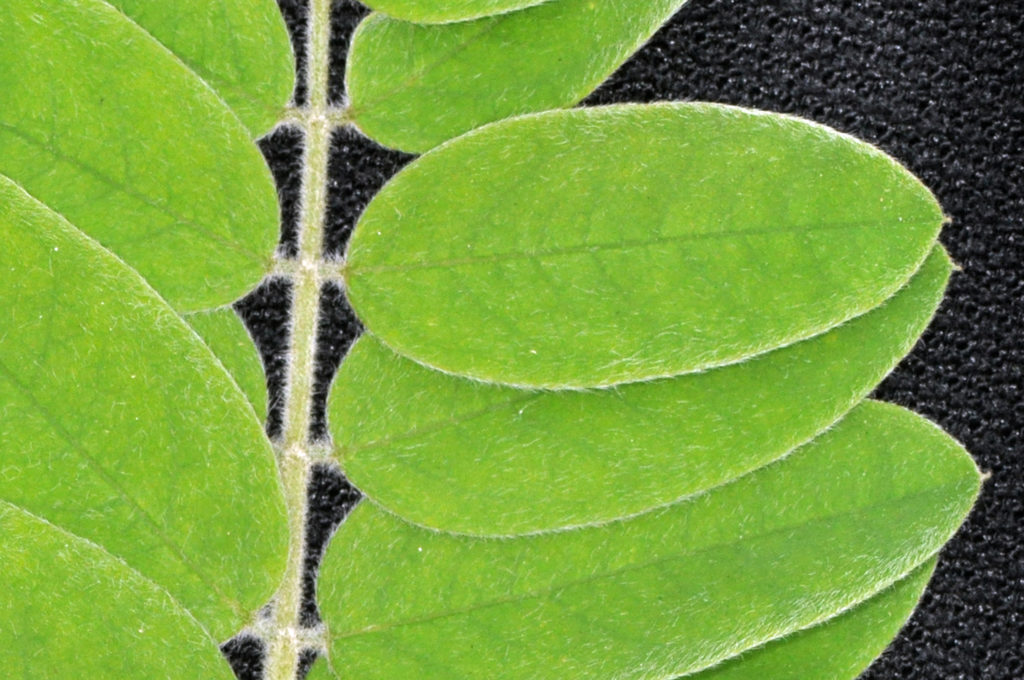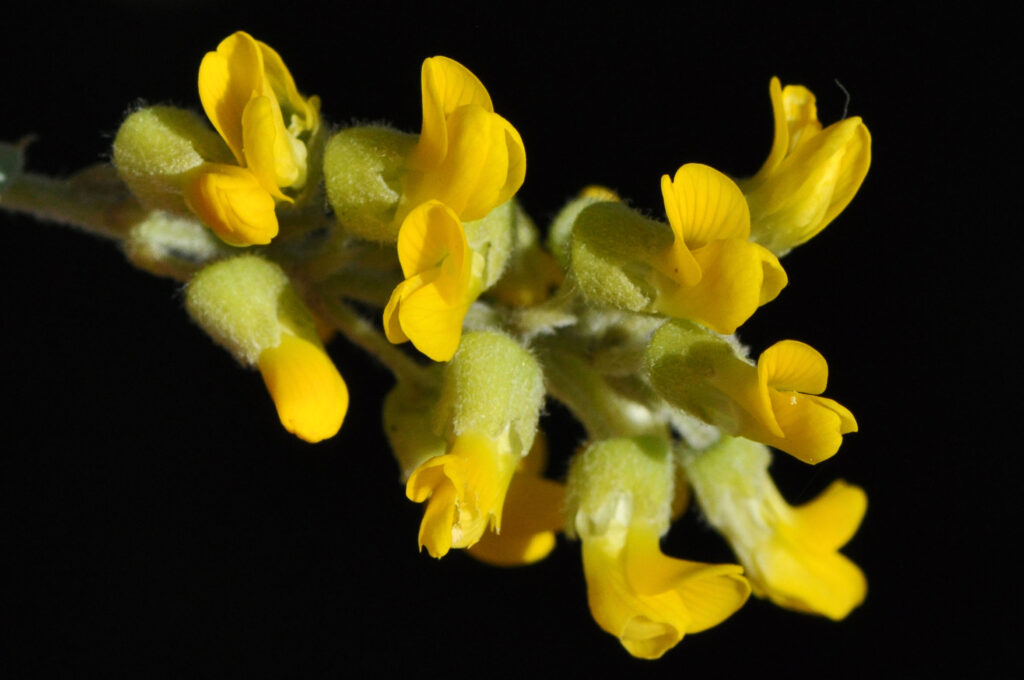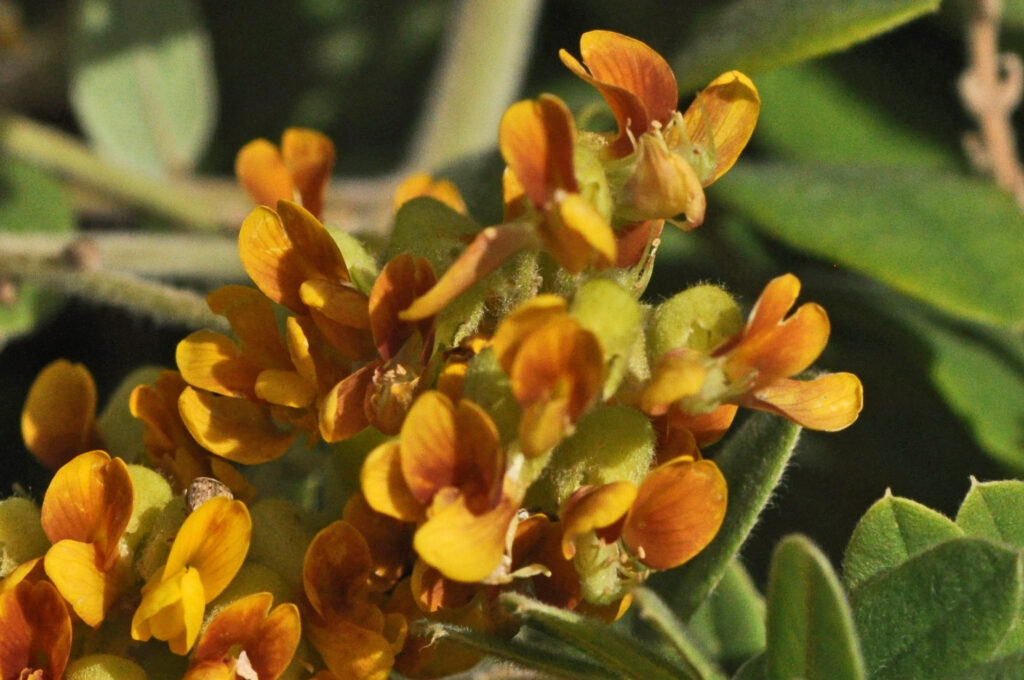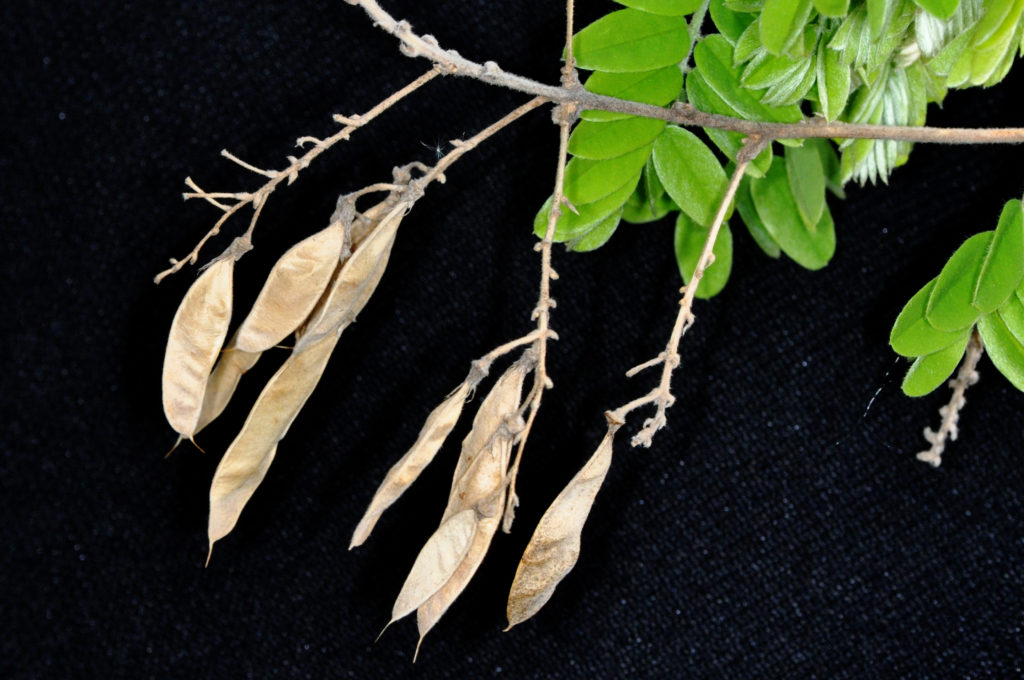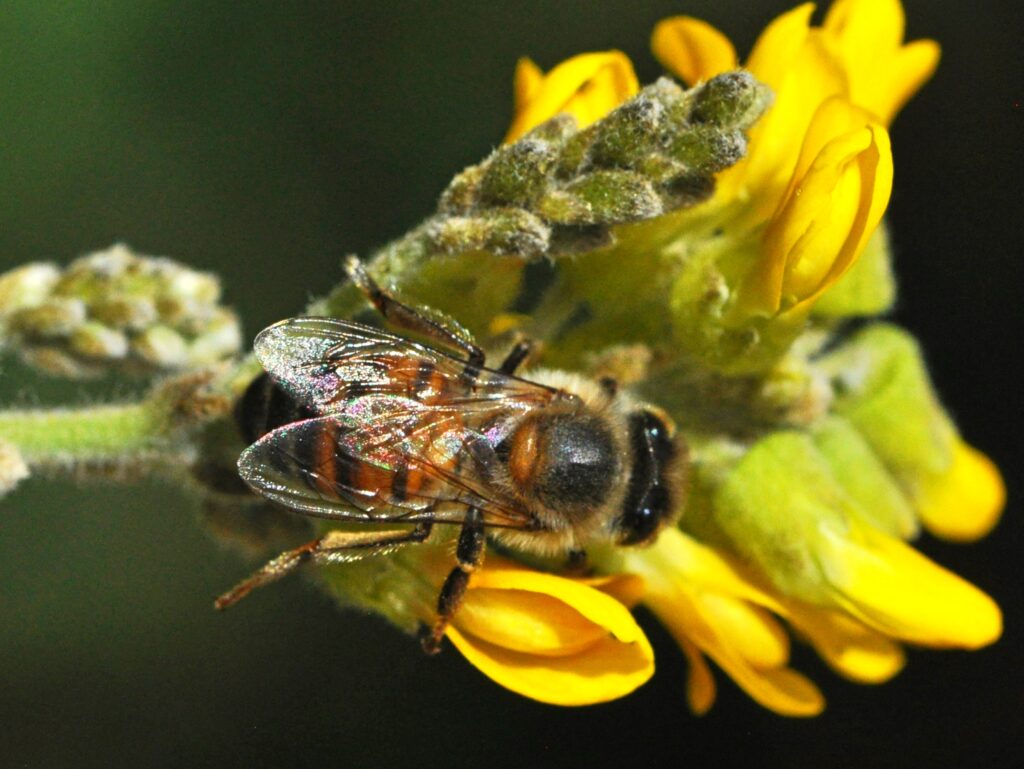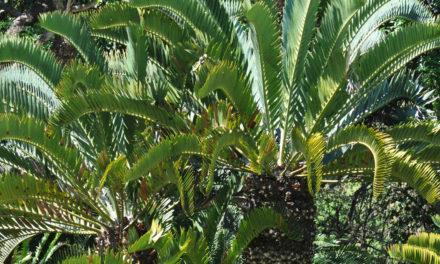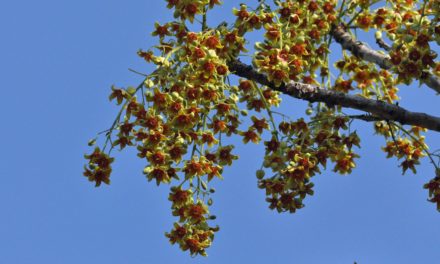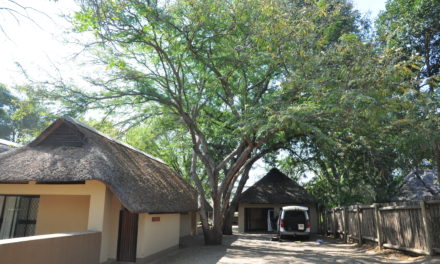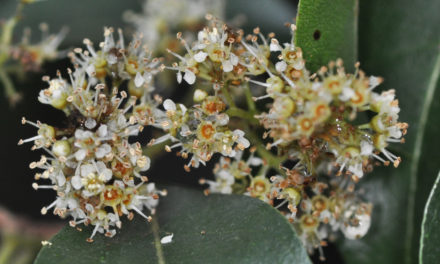Calpurnia sericea
General Info – summary
This plant may be a small to 2m high Tree or a much-branched shrub. It is one of the smaller Calpurnia species. Soft, light green Leaves are imparipinnate with overlapping leaflets. Small, attractive yellow, 5-merous, zygomorphic Flowers are pea-like and develop in pendulous racemes. The green calyx contrasts with the yellow/orange petals. Each Fruit develops into a small grey pod that is restricted between seeds.
Description
Previous Names: Calpurnia intrusa, Calpurnia obovata var. pubescens, Calpurnia mucronulata, Calpurnia obovate.
SA Tree No. 219.4.
Common names: (Afr) Berggeelkeur, Berg-geelkeur. (Eng) Mountain Calpurnia, Mountain Wild Laburnum.
Family: Fabaceae, Leguminosae (Pea, bean or legume family). After the Orchidaceae and the Asteraceae, the Fabaceae is the third largest Angiosperm (flowering plants) family with 700+ genera and close to 20 000 species. Local Tree genera on this website include Acacia (Vauchellia, Senegalia), Albizia, Bauhinia, Bolusanthus, Burkea, Calpurnia, Colophospermum, Cordyla, Cyclopia, Dichrostachys, Erythrina, Erythrophleum, Faidherbia, Indigofera, Mundulea, Peltophorum, Philenoptera, Piliostigma, Schotia and Xanthocercis. The Fabaceae are recognisable by their fruit and by their pinnately compound Leaves. Leaves may also be simple – even bilobed and usually have stipules – some of which may be spinescent. Leaflets are usually entire. Flowers are bisexual and bracteate. Regular flowers usually have 4-5 sepals and the same number of petals. Irregular flowers have 4-5 sepals and 5 or less petals. Stamens have anthers that have 2 pollen sacs and there are usually at least twice the number of stamens as petals – often 10. The superior Ovary has one locule that may contain 1 or more ovules. The Stigma and Style are simple. The single carpel develops into the Fruit, which is usually a pod. This pod dehisces on both sides and may break into segments. Seeds vary.
Name derivation: Calpurnia Named after Calpurnius whose poetry was considered an imitation of Virgil’s. Calpurnia was also the last wife of Julius Caesar. sericea – silky: referring to the straight hairs on some of the leaves. There are 7 common species of the genus Calpurnia in southern Africa.
Conservation: National Status: L C. (Least Concern). Assessment date: Raimondo et al. (2009).
Tree
This occasionally small Tree may reach 2-4m in height and has a light open crown. However, it is usually a much-branched shrub up to 2m high – (photo 382). Young stems are usually hairy (photo 910).
- 382. 2016/12/22 Walter Sisulu NBG. Photo: David Becking.
- 910. 2014/03/25. Walter Sisulu NBG. Photo: David Becking.
Leaves
Each graceful alternate light green Leaf (photo 910 – under Tree) is up to 17cm long and imparipinnate (pinnately compound leaf ending in a single leaflet – photo 224). In (photo 233) the even lighter lower leaflet surfaces are visible photo 233). In addition to the single terminal Leaflet, each leaf has up to 16 usually opposite pairs of leaflets that are typically hairy (photo 236) on both sides. Leaflets are oblong and entire (with a continuous margin, not in any way indented). The broadly overlapping leaflets (photo 233) are ovate, obovate, elliptic or almost round and up to 3,5 x 1,7cm. The Apex tapers and may be mucronate (ending abruptly with a distinct hair like tip – photo 236) or it might be rounded. The Base is round (photo 236) to slightly lobed. The hairy Petiole (leaf stalk – photo 233) is up to 2cm long. Hairy Petiolules (stalks of leaflet) are much shorter (photo 236). Stipules (basal appendage of the petiole) are slightly more than 1mm long. Stipels (secondary stipule situated at the base of a leaflet of a compound leaf) are absent.
- 233. 2015/09/15. Walter Sisulu NBG. Photo: David Becking.
- 224. 2015/09/15. Walter Sisulu NBG. Photo: David Becking.
- 236. 2015/09/15. Walter Sisulu NBG. Photo: David Becking.
Flowers
Typically, up to 100 pea-shaped Flowers develop in reasonably erect or pendulous Racemes {a simple, unbranched, indeterminate inflorescence with pedicellate (stalked flowers) along the axis that open in succession towards the apex – photo 108}. Flowers are small – usually less than 1,2cm long. They are bisexual and zygomorphic (irregular flower with the corolla divisible into 2 equal halves in one plane only). The hairy, green bell-shaped Calyx tube (with its sepals) projects inward (photo 108). It is 5-lobed, with the hairy lobes emerging from a joined base (photo 108). There are 5 originally yellow Petals (photo 108) present. They mature to a golden colour (photo 380 – taken 9 days later). There originally 5 yellow petals (photo 180) are yellow. The uppermost reflexed Vexillum petal (standard petal) resembles a sail and is partly centrally divided. As they mature the petals become a golden orange (photo 380 – taken 9 days later). Here the red lined pollinator guides become visible. The vexillum petal overhangs the two Wing petals (photo 108) and these surround and hide the lowermost pair of joined Keel petals (photo 380).
Ten Stamens with partly fused filaments each end with a small, oblong Anther (photo 380). There is a single Pistil (a unit of the Gynoecium, the female element of the flower, composed of the Ovary, Style and Stigma). The superior, stalked glabrous (smooth & hairless) Ovary contains several ovules. There is a single arcuate (shaped like a bow; curved) Style that ends in a single Stigma with a small head. (Dec-Jan).
- 108. 2016/12/13. Walter Sisulu NBG. Photo: David Becking.
- 380. 2016/12/22. Walter Sisulu NBG. Photo: David Becking.
Fruit
The initially green Fruit develops into a short flat Pod that is up to 5 cm long and is restricted between seeds (photo 226). The mature brown pod is narrowly winged on 1 side (photo 226). It starts with the remains of the calyx and ends with the remains of the style. Both are visible in photo 226.
- 226. 2015/09/15. Walter Sisulu NBG. Photo: David Becking.
- 223. 2018.01.03. Walter Sisulu NBG. Photo: David Becking.
Distribution & Ecology
This plant mostly occurs at higher altitudes up to an altitude of 2 000m. It commonly occurs in grasslands, close to running water, and in river valley floodplains. They are often associated with Leucosidea sericea (ouhout) – common is Lesotho, and Buddleja sp. These plants are naturally located in the Eastern Cape, KwaZulu-Natal, Eastern Free State, Gauteng, southern Mpumalanga, Eswatini (Swaziland) and Lesotho. The intro photo shows a butterfly – tentatively identified as Acraea horta (help needed with ID). Bees are probably involved in pollination (photo 223 under Distribution & Ecology.
- 226. 2015/09/15. Walter Sisulu NBG. Photo: David Becking.
- 223. 2018.01.03. Walter Sisulu NBG. Photo: David Becking.
Ethnobotany
This is an attractive garden plant, which can easily be grown from seeds. Plant seeds in trays in spring – after soaking in warm water overnight. Replant when the first leaves emerge. This should occur in under 3 weeks. Best flowering occurs when growing in full sun. The yellowish wood has a dark brown heartwood and is dense and hard, but due to its small size, is not much used. Water regularly and protect young plants from frost.
References
Coates Palgrave, M. 2002. Keith Coates Palgrave Trees of Southern Africa, edn 3. Struik, Cape Town.
Foden, W. & Potter, L. 2005. Calpurnia sericea Harv. National Assessment: Red List of South African Plants version. Accessed on 2024/07/25.
Palmer, E. & Pitman, N. 1972. Trees of southern Africa, Balkema, Amsterdam, Cape Town.
Schmidt, S. Lotter, M. & McCleland, W. 2002. Trees and Shrubs of Mpumalanga and the Kruger National Park.
van Wyk, B. & van Wyk, P. 1997 Field guide to Trees of Southern Africa, Struik, Cape Town.
http://posa.sanbi.org/flora/browse.php?src=SP
https://clarensnews.co.za/calpurnia-sericea/
Alice Notten. May 2005. Plantzafrica. Kirstenbosch National Botanical Garden.
Andrew Hankey. Help with ID.

